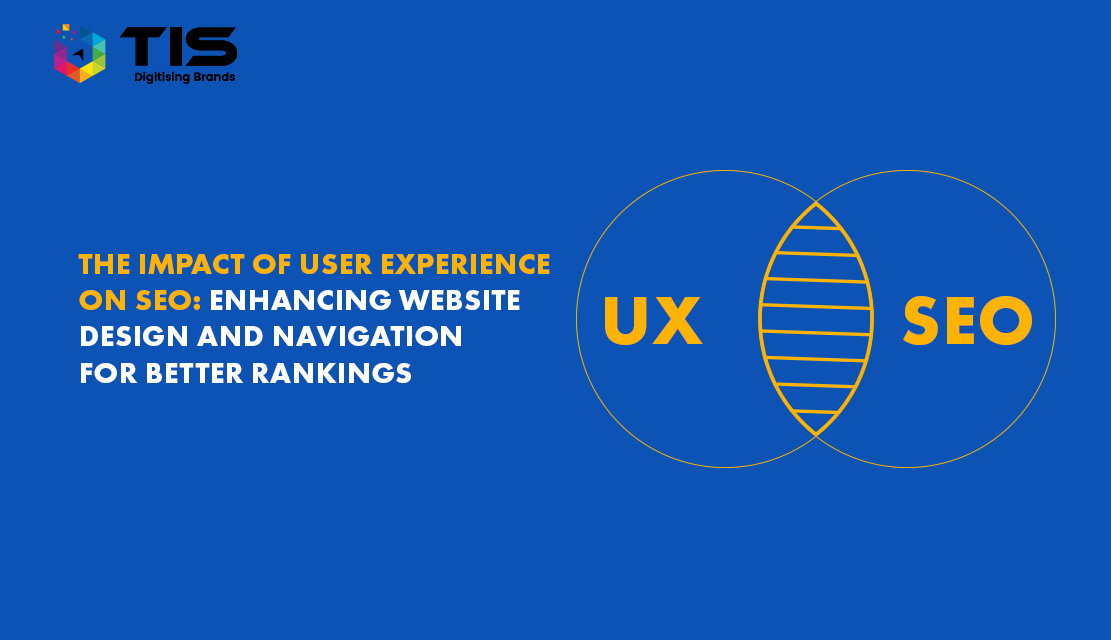






The topic highlights the crucial role of user experience (UX) in search engine optimization (SEO) and emphasizes the significance of enhancing website design and navigation to attain improved rankings in search engine results. It delves into the correlation between user experience and SEO, recognizing the interdependency between the two factors. The introduction emphasizes the importance of prioritizing UX elements for long-term success in seo services in india. By acknowledging the impact of UX on search engine rankings, businesses can understand the need to focus on creating a positive and satisfying experience for website visitors. Through optimizing website design and navigation to align with user expectations and preferences, businesses can enhance their chances of achieving better rankings and standing out in the competitive online landscape.
User experience (UX) is a broad term that encompasses the overall satisfaction and ease of use that visitors experience when interacting with a website. It takes into account various factors such as website usability, accessibility, visual appeal, and responsiveness. A positive user experience is crucial not only for engaging and converting visitors but also for influencing search engine rankings. When users have a positive experience on a website, they tend to spend more time exploring different pages, view multiple pieces of content, and exhibit lower bounce rates, indicating to search engines that the website offers valuable and relevant information. Search engines, in turn, consider these user engagement metrics as indicators of a high-quality website, leading to better search engine rankings and visibility. Therefore, understanding and prioritizing user experience is vital for businesses looking to optimize their websites for both user satisfaction and improved search engine performance.
Website design has a significant impact on search engine optimization (SEO) as it directly influences the user experience. A visually appealing and user-friendly website design not only captures visitors’ attention but also encourages them to delve deeper into the site. Search engines take into account various design factors when determining search rankings, including a responsive design that ensures optimal display across different devices, fast loading times that minimize user frustration, and mobile optimization that caters to the increasing number of mobile users. By prioritizing website design elements that enhance the user experience, such as intuitive navigation, clear layout, and compelling visuals, businesses can improve their SEO performance. A well-designed website not only attracts more organic traffic but also increases user engagement, time spent on the site, and the likelihood of conversions. Therefore, investing in a user-centric website design is crucial for achieving higher rankings in search engine results and driving meaningful interactions with visitors.
Improving website navigation is crucial for enhancing the user experience and optimizing search engine visibility. A clear and intuitive navigation system plays a pivotal role in helping visitors easily locate the information they seek and navigate through the website seamlessly. By implementing a well-structured information architecture and organizing content in a logical manner, businesses can ensure that users can quickly find what they are looking for, leading to a positive user experience. Additionally, clear menu systems that are easy to navigate further contribute to a smooth browsing experience. By incorporating breadcrumb navigation, businesses provide users with a trail of links that show their current location within the website hierarchy, allowing for easier navigation and improved user understanding of the website’s structure. Internal linking, which involves linking relevant pages within the website, not only helps users discover related content but also assists search engines in comprehending the interconnectedness of webpages. Descriptive anchor texts that accurately describe the linked content enhance user understanding and provide valuable context to search engines. By prioritizing and optimizing website navigation, businesses can ensure a seamless user experience, improve search engine visibility, and ultimately enhance the overall effectiveness of their website.
Optimizing page load speed is crucial for enhancing both user experience and search engine optimization (SEO). Slow-loading webpages not only frustrate users but also contribute to high bounce rates, as visitors are likely to abandon a site that takes too long to load. In addition, search engines consider page load speed as a significant ranking factor, as they aim to deliver fast and efficient search results to users. To improve page load speed, businesses can implement several strategies. First, optimizing image sizes by compressing them without sacrificing quality can significantly reduce file sizes and enhance loading times. Leveraging caching techniques, such as browser caching and server-side caching, allows repeated visits to a website to be faster by storing static resources locally. Compression techniques like Gzip compression can reduce the size of HTML, CSS, and JavaScript files, further improving load times. Minimizing unnecessary code and reducing the number of HTTP requests by combining and minifying files also contribute to faster page load speed. By implementing these optimization techniques, businesses can create a better user experience by providing quicker access to content and improve their search engine rankings by meeting search engine expectations for fast and efficient websites.
The prevalence of mobile devices for browsing the internet has made having a mobile-friendly website absolutely crucial. With a large portion of users accessing websites through their smartphones and tablets, businesses need to ensure that their webpages are optimized for mobile viewing. Mobile optimization involves designing and developing websites in a way that ensures they display properly and function smoothly on various screen sizes and resolutions. One of the best practices for achieving mobile-friendliness is implementing responsive design, which automatically adjusts the layout and content of a website based on the device being used. By adopting mobile-friendly design principles, businesses can provide seamless and enjoyable experiences for users across different devices, regardless of whether they are using a desktop computer, a smartphone, or a tablet. This not only improves user satisfaction and engagement but also has a positive impact on search engine rankings. Search engines prioritize mobile-friendly websites in their results pages, recognizing the importance of delivering a user-friendly experience to mobile users. Therefore, by embracing mobile-friendly design and optimization techniques, businesses can enhance their online presence, attract a larger mobile audience, and ultimately improve their search engine rankings.
Measuring user experience metrics is essential for understanding the impact of UX on SEO. One crucial metric to monitor is the bounce rate, which reveals the percentage of visitors who leave the website after viewing only one page. A high bounce rate indicates that users are either not finding the information they need or having a poor experience navigating the site. Additionally, metrics such as time on page, click-through rate, and conversion rate offer valuable insights into user engagement and satisfaction. By utilizing analytics tools to track these metrics, businesses gain a comprehensive understanding of how users interact with their website. This data enables them to identify areas for improvement and make data-driven decisions to enhance the user experience, ultimately optimizing SEO performance. By continuously monitoring and analyzing these metrics, businesses can refine their strategies and ensure that their website is delivering a seamless and satisfying experience for visitors, leading to improved search engine rankings and increased conversions.
In conclusion, user experience (UX) has a significant impact on search engine optimization (SEO). By prioritizing website design and navigation that enhance the user experience, businesses can improve their search engine rankings, attract more organic traffic, and achieve long-term success in the competitive online landscape. A visually appealing design, intuitive navigation, fast page load speed, and mobile-friendly layout are essential elements for providing a positive user experience. By measuring user experience metrics and making data-driven optimizations, businesses can continuously improve their website’s performance and strengthen their SEO strategies. Ultimately, a strong focus on user experience not only benefits visitors but also contributes to higher search engine rankings, increased engagement, and improved conversions.

Introduction: Google algorithm updates play a critical role in determining the ranking of search results by modifying the intricate rules and calculations involved. Their primary objective is to enhance the quality and relevance of search results, ensuring that users find the most valuable and accurate information. However, these updates...
Read More

Introduction The role of content marketing in SEO is essential for businesses aiming to achieve better rankings and enhance their online visibility. Content marketing revolves around the creation of valuable, informative, and engaging content that resonates with the target audience. In the realm of SEO, high-quality content holds significant...
Read More

The future of SEO is a fascinating and dynamic field that encompasses the ever-changing trends and predictions in the digital landscape. With search engines constantly refining their algorithms and user behavior evolving, it is imperative for SEO practices to adapt and evolve to maintain a competitive edge in the...
Read More